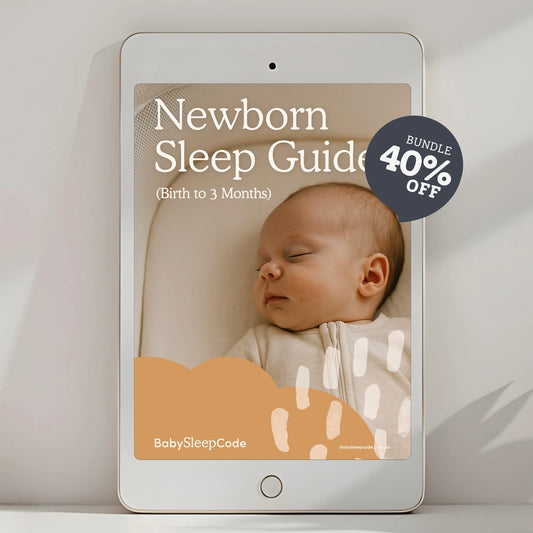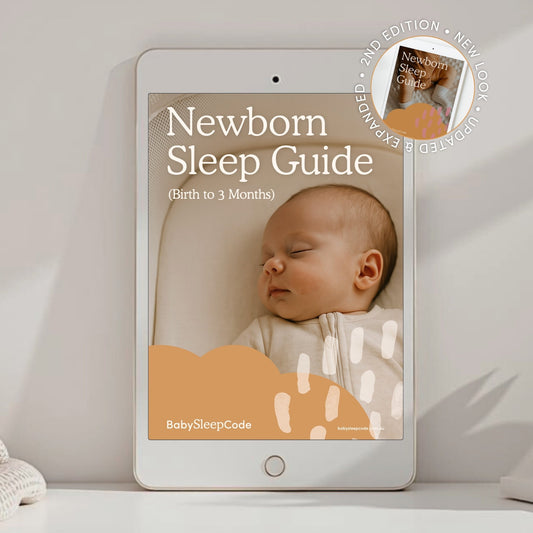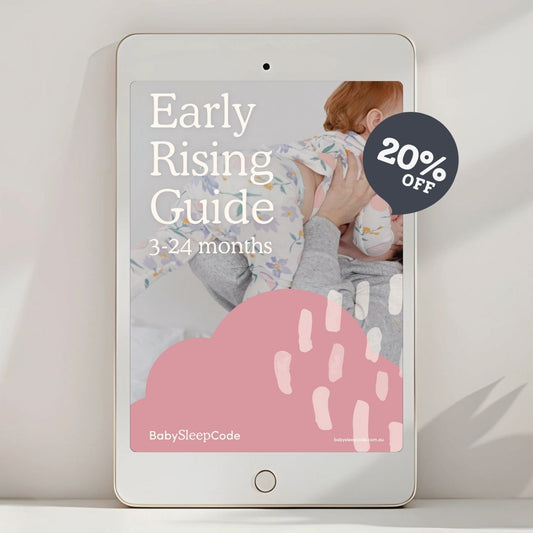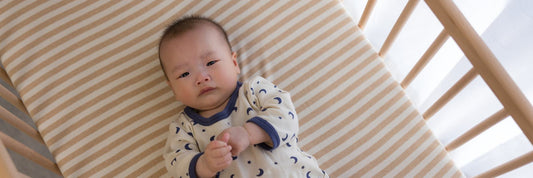Bringing your new baby home is such a beautiful, if not (initially) sleep-deprived, time for a family. For those early months the bassinet by your bedside is their ideal little sleep space, keeping them close enough for easy feeding through the night.
But before you know it, your baby will start outgrowing their bassinet, leaving many parents wondering how to manage the transition to a crib. And here’s the truth: It’s usually a much bigger deal for us than it is for the baby! Below, I’ll walk you through how to know when it’s time to make the switch, how to prepare for it, and why it doesn’t need to be stressful.
When should you move your baby out of their bassinet?
The key reason to move your baby from a bassinet to a cot is because they've started showing signs of rolling, which typically happens around 4 months of age. But a lot of babies will outgrow their bassinet before this, so whichever comes first. In Australia, bassinets do not have to meet any mandatory safety standards which is why it’s important to make the transition sooner rather than later, as bassinets are not designed to accommodate babies who roll or wiggle actively—most don’t have breathable sides (unlike a cot), increasing the risk of suffocation.
Once your baby begins moving around, they may also wake more frequently if their arms or legs bump into the sides of the bassinet and will really love the extra space in their cot.
Room sharing vs. moving them to their own room
To meet safe sleep guidelines, it’s best to continue room sharing until at least 6 months of age, if possible. This doesn’t mean your baby has to stay in the bassinet all that time—moving them to a crib in your room is great if it can fit. Room sharing (not bed-sharing) has been shown to reduce the risk of SIDS.
Setting up a safe sleep space
Safety always comes first, whether your baby is in a bassinet or a crib. Here are some key crib safety tips:
- Choose a crib that meets current safety standards with slats between 50 mm and 95 mm apart.
- Ensure the mattress fits snugly, leaving no gaps where tiny limbs could get trapped.
- Keep the crib free from pillows, bumpers, stuffed animals, and other soft bedding to prevent suffocation and overheating risks.
- Always lay your baby down on their back to sleep, and a firm flat mattress.
- Make sure the crib is positioned away from cords, heaters, or window blinds.
- Regularly inspect the crib for any loose screws, parts, or damage.
- Read more about safe sleep at RedNose.org.au
Preparing for the transition to a crib
For many babies, the transition to the crib is smoother than parents anticipate. The secret is to keep everything else about their sleep environment and nap schedule consistent so the only change is what they now sleep in.
Here are some helpful prep steps:
- Place the crib in the same spot as the bassinet was (if you're not moving them into their own room). This keeps the environment—like temperature, lighting, and smells—familiar.
- Sleep with the crib sheet yourself for a night before the transition. So the crib smells like you.
- Stick with your usual bedtime routine to signal that nothing else is changing.
- Make the move at bedtime, rather than during naps, as sleep pressure is higher at night, making the transition less disruptive.
Managing more than one change
If you’re also transitioning from a swaddle to a sleeping bag, keep in mind that your baby might initially feel cooler than usual and may need an extra pj under layer. Swaddling keeps babies warm and cozy, so moving to an arms-out sleeping bag can take some adjustment. Be sure the room temperature is not too cold, but avoid overheating—dressing your baby appropriately for the season is key to better sleep.
What to expect during the first nights after the move to a cot
For some parents, the transition from bassinet to cot can feel overwhelming, especially if it coincides with big milestones like learning to roll, the 4 month sleep regression, or the 6 month sleep regression.
It’s important to know that if sleep gets tricky around this time, it’s likely due to a sleep regression, and not the move to the crib. The timing may feel like the transition caused the disruption, but often it’s just a coincidence!
So if your baby continues to struggle with sleep beyond a few days, it might be worth booking a sleep consultation to help get things back on track. Having a plan can make all the difference—we're here to help.










